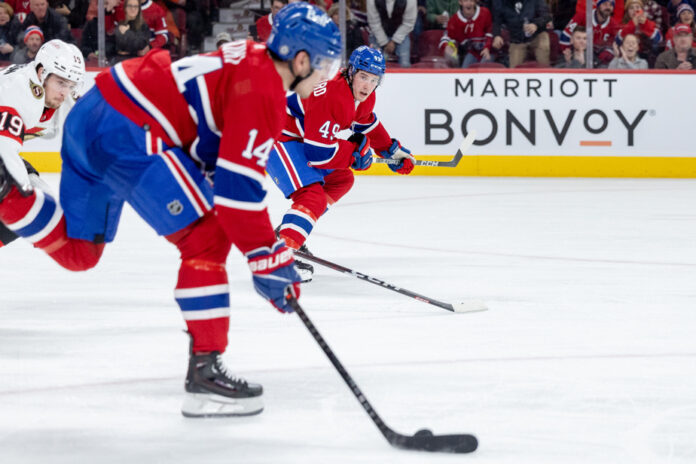In hockey player statistics, it is often referred to as “shots attempted”. Can you explain what it is and why it is taken into account?
It’s all in the name: an attempted shot is a shot taken by a player. He can miss the target, be blocked in defense or reach the goalkeeper, it doesn’t matter. When it comes to shots in general, we will refer very largely to shots on target. Sharing those shots on target gives a pretty general idea of how the match looked, but sharing shots attempted is a better indicator. Case in point: If two teams finish the game 30-28 in shots on target, it will be assumed that the game was a close contest. However, if the shots attempted are 50 to 33, it will be understood that Team A has had the puck much more often than Team B, and that the latter has done a good job of limiting the number of pucks having their way to its keeper.
How does the movement of reporters covering the Canadiens work on the road? I know that only the TV broadcast team travels on the CH plane.
You’re right, only broadcast descriptors and analysts share the team plane. Any other beat reporters or cameramen have to… get their act together! This involves catching flights at dawn in order to arrive in time for practice or to hop between cities in a two-game-in-two-night scenario. For destinations between which transport is not easy on a tight deadline, some media, including La Presse, Le Journal de Montréal or RDS, will send two different journalists so as not to miss anything.
In the NHL, we regularly see trades involving draft picks. These choices may or may not be protected. What is a protected draft pick on a trade?
This is a draft pick with a condition. The classic example: A team agrees to give up a future pick unless it ends up in the top 10 in the draft. In these cases, both teams agree in advance on compensation if the conditions are not met. Typically, it’s a first-round pick the following year.
In football, if a quarterback gets knocked down by three defensive players simultaneously, will the tacklers each have a third of a sack? Or do the math take over and they’re generously given half a bag?
The math takes over. If two or more tacklers are involved in a quarterback sack, each is credited with 0.5 sacks.
Could it be considered that a suspended player deprives his team of a player for the duration of the suspension? So when a fourth-line player gets a five-game suspension for unscrewing a first-line player’s head, his team can only employ 19 players for the duration of the suspension.
In absolute terms, your proposal holds water and would be one more incentive – chemistry would be affected – for players to avoid losing their minds. However, it is difficult to imagine the NHL moving forward with this measure.
Suspensions are indeed down, so we are not dealing with an uncontrollable plague of violence between players, on the contrary. As of last week, ESPN reported that the NHL had imposed only 18 suspensions, for 37 games in all, since the start of the season for violent acts, a remarkable drop from recent years. Last season, for example, the league imposed 25 suspensions for a total of 63 games.
The NHL is not used to going for such sharp solutions for problems that resolve naturally, the management of fights being a convincing example. Barring a resurgence of dangerous blows and suspensions, it is hard to imagine that this subject will be brought back to the table.
I have seen over the past few days that NHL teams have traded players. For example, on March 10, the Carolina Hurricanes traded Zack Hayes to the New Jersey Devils for Jack Dugan. However, I believed that this was no longer possible after the deadline for transactions. What is it?
There were indeed six trades completed in the NHL after March 3. Here is the list of seven players who have changed addresses: Cole Krygier, Jack Dugan, Zackary Hayes, Kristians Rubins, Jayce Hawryluk, Steven Kampfer and Anthony Angello. After the trade deadline, a traded player can no longer play in the NHL, only in the American League. This explains why the list above is only made up of minor league players. Also, five out of six times the feedback was good old “future considerations”. It will therefore be concluded that, in these situations, one team has done the other a favor.















